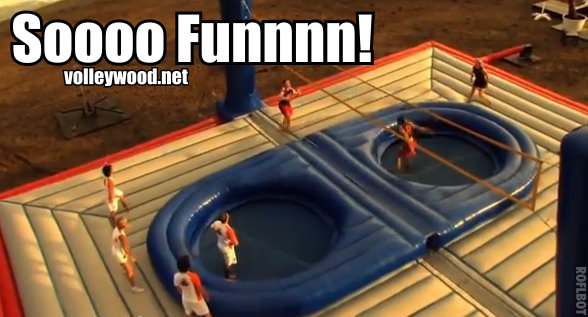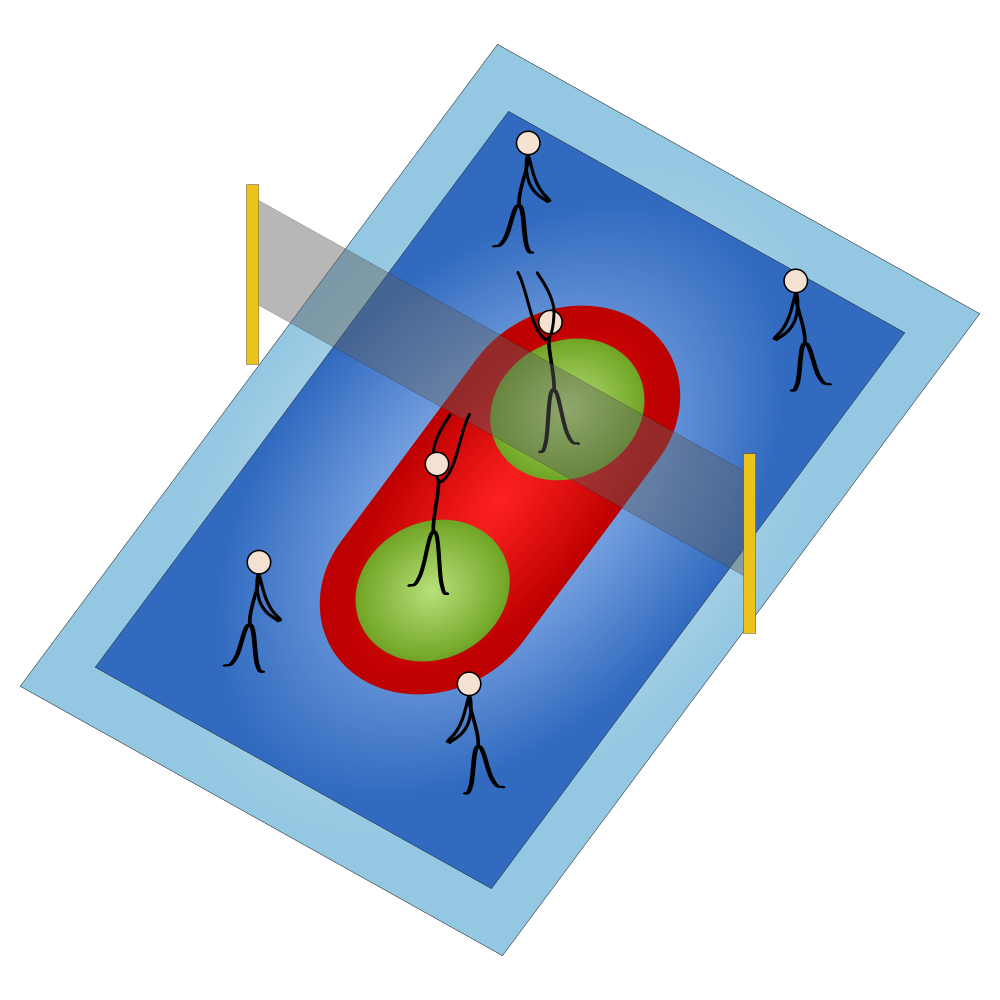A new fantastic sport! Volleyball + Soccer + Gymnastics = Bossaball!
Bossaball is a sport invented in Spain by Filip Eyckmans who developed the concept 2004. It is similar to volleyball, but also includes elements of football (soccer), gymnastics and capoeira. Each side of the court has an integrated trampoline, allowing players to bounce high enough to spike the ball.
Bossaball clubs exist in various countries including Brazil, Germany, Netherlands, Spain, Portugal, Romania, Singapore, Kuwait, Ecuador and Saudi Arabia.
The most famous teams are the Selection of Spain, the Selection of Brazil, and the Selection of North Carolina State University in Raleigh. They go all over the world making exhibitions and promoting the game. In 2012, the team of North Carolina State University became the first American team to receive an invitation to compete with the Brazilian Bossaball Association (BBA).
Each team consists of 5 players. One player (the attacker) is positioned in the trampoline, the others around him/her on the inflatables. A player from the serving team (the server) throws or kicks the ball into the air and attempts to hit the ball so it passes over the net on a course such that it will land in the opposing team’s court (the serve). The opposing team must use a combination of no more than 5 contacts with the ball to return it to the opponent’s side of the net (6 touches for recreational games). These contacts can be exercised using any body part (maximum one contact with the hands, while for contacts with other parts of the body 2 successive contacts are allowed). Players are not allowed to touch the net and always have to remain with at least one body part on their own side.
During a rally the ball is tossed around while the attacker jumps on the trampoline in order to gain height. The attack begins when one of the rallying players aims the ball’s trajectory towards a spot in the air where the attacker can hit it (spike or kick) and returns the ball over the net.
The team with possession of the ball that is trying to attack the ball as described is said to be on offense. The team on defense attempts to prevent the attacker from directing the ball into their court: players at the net jump and reach above the top (and across the plane) of the net in order to block the attacked ball. If the ball is hit around, above, or through the block, the defensive players arranged in the rest of the court attempt to control the ball with a dig (usually a fore-arm pass of a hard-driven ball, or a foot control). After a successful dig, the team transitions to offense.
The game continues in this manner, rallying back and forth, until the ball touches the court within the scoring zones.
Scoring
Points can be made either by scoring or by an opponent’s fault. When the ball contacts the floor (the bottom of the trampoline or the inflatables) within the court boundaries (the outer safety zone is out), the team on the opposite side of the net is awarded a score. The safety border around the trampolines is a free zone. On this “bossawall” the ball may bounce or roll. When the ball lays still on the bossawall, the point goes to the opponent’s team.
Scoring with volley touch:
1 point: when the ball hits the opponents playing area.
3 points: when the ball is played directly in the opponent’s trampoline area.
Scoring with soccer touch (any part of the body except hands):
3 points: when the ball hits the opponents playing area.
5 points: when the ball is played directly in the opponent’s trampoline area.
The team that scored serves for the next point. If the team that scored served in the previous point, the same player serves again. If the team that scored did not serve the previous point, the players of the team rotate their position on the court in a clockwise manner. The game continues, with the first team to score 25 points (and be two points ahead) awarded the set. Three sets are played in one match.
Watch This!
We are in love with this game!
Let’s play Bossaball!
(source & image: wikipedia.org)


